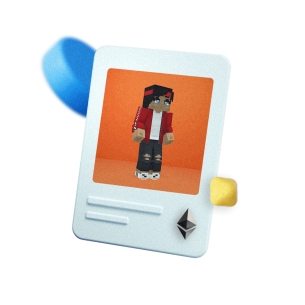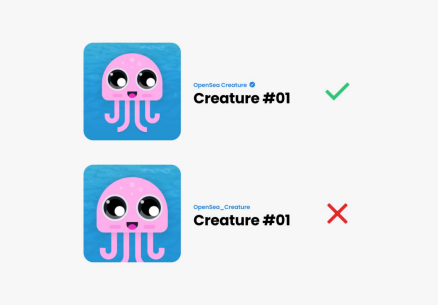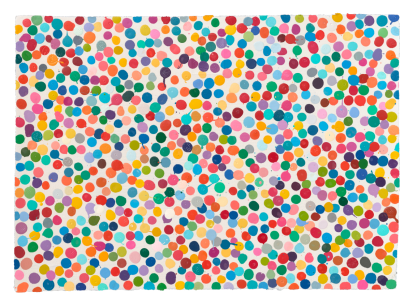What is an NFT?

What is an NFT?
An NFT (non-fungible token) is a unique digital item stored on a blockchain. NFTs can represent almost anything, and serve as a digital record of ownership.
Fungible vs. non-fungible
Before we dive into NFTs, it’s important to understand the “non-fungible” part of “non-fungible token.” When an item is fungible, it means it’s interchangeable with another of the same item. A classic example is a $1 dollar bill: you could swap dollars with someone and you’d both still have $1.
Non-fungible, on the other hand, means the item is totally unique, and therefore has its own unique value. For example, two cars of the same make and model might have different values based on how many miles are on the odometer, their accident records, or if it was previously owned by a celebrity.
How do NFTs work?
NFTs operate on blockchain technology. The blockchain is basically a large, digital, public record. The most popular blockchains are distributed across many nodes (read: people’s computers), which is why you’ll hear them described as “decentralized.”
So instead of a central company-owned server, the blockchain is distributed across a peer-to-peer network. Not only does this ensure that the blockchain remains immutable, it also allows the node operators to earn money, instead of a single company. Because the blockchain records and preserves history, it is uniquely positioned to transform provable authenticity and digital ownership.
When someone creates, transfers, buys, sells, or otherwise does something with an NFT, that all gets recorded on the blockchain. This is what enables authentication.
This record serves as a permanent statement of authenticity that can be viewed or accessed by anyone. Today, when you buy a piece of art or a collector's item, it typically comes with a paper certificate of authenticity, which you must then keep track of forever. It is easily forgotten, lost or destroyed, creating a very fragile system for authenticity. Blockchain’s offer a simple and more secure solution to this long standing issue of proving authenticity.
Let’s say you want to buy a piece of artwork from Tyler Hobbs. With NFTs, you can see the entire history of that piece, all the past owners, every sale, all the way back to Hobbs’ original creation of the piece. Without NFTs, you wouldn’t know if you were buying the real piece or just a really good fake.

NFTs can establish which items are authentic and which are not.
The impact of NFT technology
Blockchain technology is revolutionary for digital goods. With NFTs, digital goods can be provably scarce, openly transferable, and have authenticated ownership. But you might be thinking…so what?
For creators, these new attributes are incredibly powerful. Instead of distributing their artwork, music, or other creations on platforms that are traditionally hard to monetize, they’re able to sell unique and authenticated items on a blockchain-based marketplace. In addition to the initial sales, the underlying code that powers NFTs also can also enable creators to receive set creator earnings on every secondary sale. For example, a developer could make an in-game skin that can be used across a variety of games and has established authenticity and ownership, and that developer can earn money every time that skin is bought or sold.
This technology is revolutionary for collectors, too. Imagine you’re about to buy a concert ticket online— with NFTs, you can trust its authenticity, because of the undisputed blockchain history, instead of relying on the reseller’s word.
What are NFTs used for?
An NFT can represent anything, but let’s explore some of the ways NFTs are being used today, and potential implementations for the future.
Art
Artists are creating incredible and novel pieces with NFTs. Damien Hirst used NFTs in his collection “The Currency”, in which he created digital versions of 10,000 unique physical paintings. Collectors had one year to decide if they wanted the digital or the physical version of the painting— whichever version they did not choose would be destroyed.

“Take that hair from me”. Damien Hirst.
Profile pictures (PFPs)
These are probably the projects you’ve heard the most about: Bored Ape Yacht Club (BAYC), Doodles, World of Women (WoW), and more. For many people on the internet, these PFPs actually become their online identity. Not only do they identify with the group, they strongly identify with their avatar. PFP projects are also centered around holder benefits (like BAYC’s famous yacht party) and community (like WoW, which donates a portion of their creator earnings to women-centric charities).
Collectibles
NFTs bring some extra oomph to your traditional collectibles. Instead of a physical basketball trading card that sits in a binder under your bed, you can collect dynamic NFTs from the NBA’s collection “The Association,” where each card changes based on that player and team’s performance.
Domain names
Naming standards like Ethereum Naming Service (ENS) and Bonfida (the equivalent naming service for Solana) have emerged to streamline naming for wallets, websites, and other blockchain applications. These help make using the blockchain more user-friendly, with human-readable names and built-in verification.
Ticketing and membership
Brands like Cameo and Coachella have turned to NFTs to implement exclusive tickets and passes. CameoPass features work from three prominent artists, but holders of their NFTs also benefit from exclusive celebrity Q&A sessions and parties across the globe. Coachella introduced their NFT marketplace and collections in 2022, including lifetime passes.

“gm” from the CameoPass collection. Burnt Toast.
Gaming
Gaming NFTs are revolutionary because of their utility, ownership, and interoperability. This category is still relatively nascent however many gamers are excited by the possibilities of in-game items being usable across different games and not under the control of a single game studio. Aurory Project is a gaming studio that leverages the Solana blockchain to streamline in-game item ownership.
Virtual worlds
Blockchain-based metaverse projects like Otherside, Decentraland, and The Sandbox have emerged, where users can build digital experiences and open economies. In addition to allowing developers to build their own metaverses, NFTs can augment the success of platforms like Roblox by enabling users to actually own their digital items. As these virtual worlds grow and expand users can maintain their sovereignty and ownership, not the platform.
Future applications
New applications for the blockchain are constantly emerging. New use cases include identity verification, intellectual property, and storage solutions, like Courtyard, which holds physical inventory and enables you to safely hold, sell, or claim your item you’re ready to redeem. The possibilities for future applications are endless!